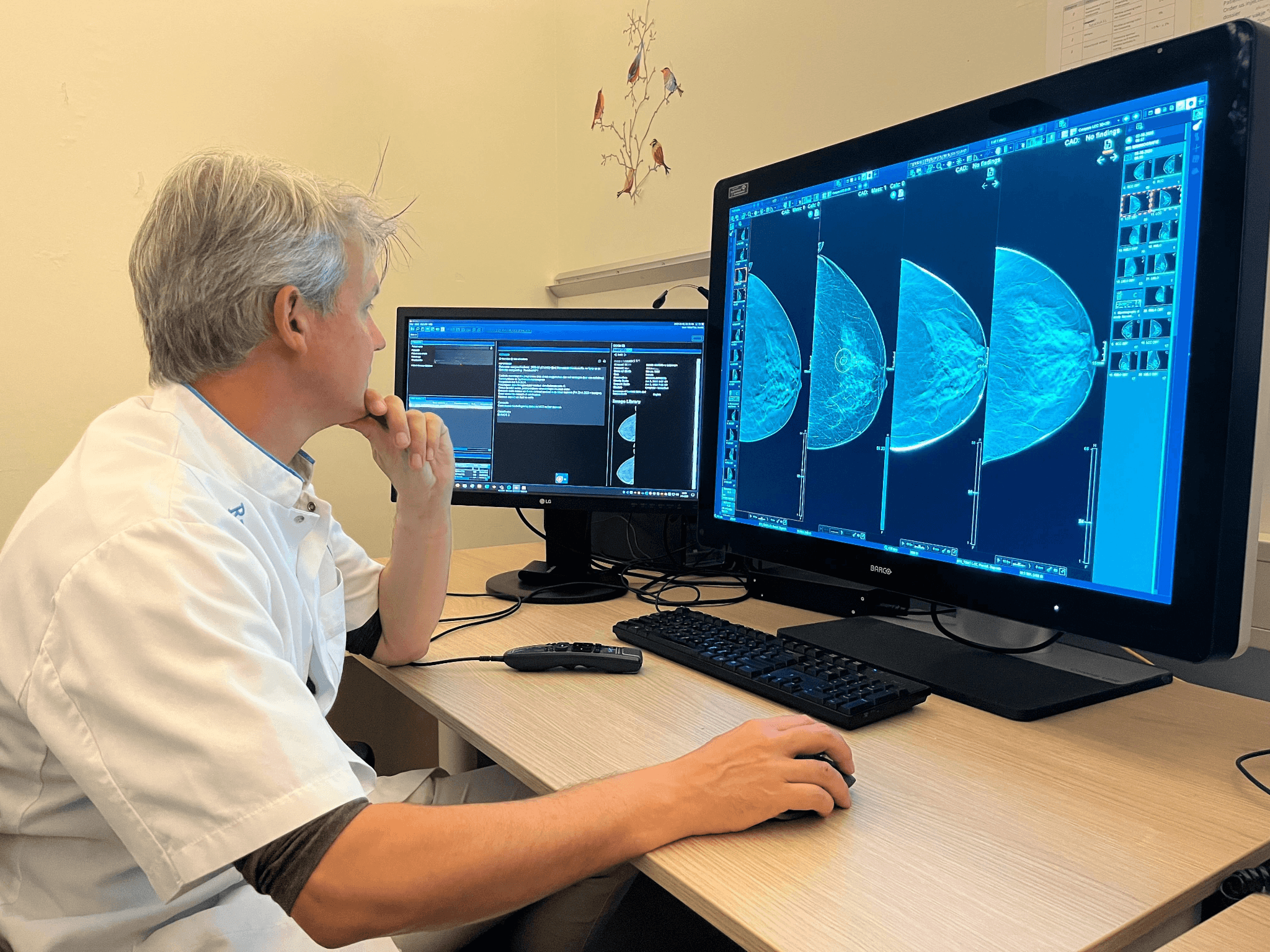AI also assesses Dutch mammograms better than radiologists
RadboudUMC: Computers can replace second radiologists in breast cancer screening. But applying AI is logistically challenging.
Published on August 15, 2025

Ritse Mann assesses a scan © RadboudUMC
Team IO+ selects and features the most important news stories on innovation and technology, carefully curated by our editors.
AI is also detecting tumors more frequently and earlier in the breast cancer screening program in the Netherlands. These tumors can then be treated at an earlier stage. Researchers led by Radboudumc have demonstrated this in The Lancet Digital Health. The use of AI can reduce the workload and save millions of euros per year.
Swedish research has already shown that AI detects breast cancer more often on mammograms than radiologists. In addition, AI can reduce the workload for radiologists. It now appears that AI can also replace the second radiologist in breast cancer screening in the Netherlands. This even leads to more tumors being detected earlier, which later prove to be clinically relevant.
AI is right more often
Researchers led by breast radiologist Ritse Mann of Radboudumc analyzed 42,000 breast scans. These mammograms were taken as part of the Dutch screening program in the Utrecht region. Previously, two radiologists assessed the scans, as is currently standard practice in breast cancer screening. Now, the researchers also looked at the scans using AI from the company ScreenPoint Medical.
In addition, they followed the women whose scans were used for almost four and a half years. Multiple scans were available for many women.
The study showed that one radiologist and AI together find more tumors than two radiologists. AI also finds tumors earlier. "Sometimes AI sees a tumor, but the radiologists do not yet recognize it as such. This is called a false positive finding. But often that tumor still shows up on a subsequent scan. So the AI was right after all,“ says PhD candidate Suzanne van Winkel. ”By the time the radiologist raises the alarm, it often turns out to be a larger, more invasive tumor. These definitely need treatment, preferably as early as possible."
Replacing the second radiologist
In Sweden, AI is already being used to analyze mammograms for screening. “They are replacing the second radiologist with AI. Only if the AI has doubts does a second radiologist take a look,” explains Mann. “We see that the radiologist works very well with the AI, which means that more tumors are detected without many more women having to come back for additional checks.”
The current study demonstrates that AI is sufficiently capable to replace the second radiologist in analyzing screening scans in the Dutch context. This could save a few million euros per year. However, AI is not yet used here. “In Sweden, screening is organized regionally, while in the Netherlands it is done nationally. This makes the application of AI in the Netherlands more challenging from a logistical point of view,” says Mann. “The IT capacity is not yet available in the Netherlands. That requires funding.”
